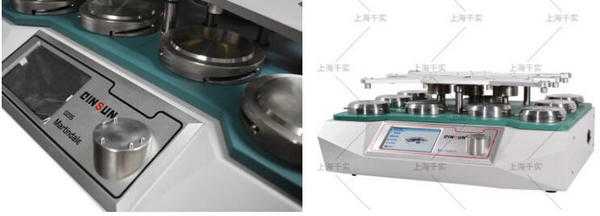Martindale Abrasion And Pilling Tester
Martindale Abrasion & Pilling Tester. To determine the abrasion and pilling resistance of all kinds of textile structures. Samples are rubbed against known abrasives at low pressures and in continuously changing directions. The amount of abrasion or pilling is compared against standard parameters.
The unique design of our Martindale abrasion tester allows removal of individual sample holders for examination without lifting the top motion plate. It provides individual counters and parking function, interval time settable and a large touch-screen display. Standard sample holders and 9 and 12kpa Weights are included.
The Martindale abrasion tester is available with 4, 6, 8 or 9 test positions.
Testing Standards:
ASTM D4970, ISO 12945.2, GB/T 4802.2/13775/21196.1/21196.2,
ASTM D4966, ISO 12947, FZ/T 20020, BS 3424-24/5690,
ISO 12947.1/12947.2, M&S P17/P19/P19C,
NEXT 18/18a/18b, ISO 5470-2, IWTO-40, JIS L1096 8.17.5
Method E, Woolmark TM 112/196, BS EN 388/530/13770, ISO 20344
Product Information:
The instrument is professionally designed to determine the abrasion and pilling resistance of all kinds of textile structures.
Samples are rubbed against known abradents at low pressures and in continuously changing directions and the amount of abrasion or pilling is compared against standard parameters.
Provided with Touch Screen Controller and unique programming device which includes preprogammable batch and totaliser counters, individual station counters, 4 selectable test speeds with liquid crystal display.

评论
发表评论